Photo

Neil Jenney, Trash and Trashcan, 1970. Oil on Canvas. https://www.moma.org/collection/works/78525?classifications=9&date_begin=1964&date_end=1975&locale=en&page=2&q=&with_images=1
Finding Meaning in Trash and Trashcan
The artwork I selected for this assignment is a painting called Trash and Trashcan by Neil Jenney. For this 1970 painting, Jenney used synthetic polymer paint on canvas, with painted wood frame. Overall, the painting appears quite minimalist and paired with a straightforward title (Trash and Trashcan) the subject matter is easily identifiable in the image. However, a deeper analysis of its form reveals the use of several principles of design working together to make the focal point, or main visual idea of the artwork, identifiable. In the instance of this painting, I identified two focal points. The primary focal point is, of course, the trashcan itself.
This artwork makes the focal point identifiable by utilizing positive space and negative space. The object of the trashcan occupies the positive space its green background is the negative space. As opposite spaces meant to create a distinction between two parts of a whole, there is still a sense of unity and balance.
For instance, there is unity in the textures Jenney creates through his brushwork. Using simplified, yet short, unbroken strokes for the green background, I interpreted this space as being akin to grass. He doesn’t use broken strokes for the grass, but short, almost wave-like strokes which implies continuous movement. He uses almost the same brushwork for the trashcan; multiple but evidentially broken strokes, which go in different directions. Since he uses relatively the same size brush strokes when painting the trash can, and when painting the grass, he achieves unity there; the trashcan feels like a natural part of the setting it is in by not straying from the size of his brush or the opacity of colour too much.
Compared to the trashcan, the trash itself is much smaller; one of the two crushed cans is barely visible but the other crushed can is within the viewer’s line of vision. The shade of grey the metal of the crushed cans is the same shade of warm grey the trashcan is, which unifies the trash and the trashcan as one. Jenney uses two principles to help make the cans stand out more. His most effective method is using red, the complementary colour of green, to generate visible contrast where the red meets the green. His second method seems hardly noticeable because the viewer is not meant to consider it closely at first glance, but upon looking closer it is evident that the brushwork is different for the two cans; smoother brush strokes make for a smoother texture. The brushwork of the grass differs around the cans too. Rather than large strokes, the grass surrounding the cans have finer, more defined strokes. White lines representing highlights help define the grass further.
Still, the most identifiable way Jenney uses contrast overall is his desaturation of the trash can; warm-toned grey and white for the text, against a saturated, green, background. Yet, despite this colour contrast, the value of the colours used in the image is relatively the same. The shade of grey of the trashcan and can, the shade of green of the grass, the shade of red if the can’s label, the shade of white of the text, and even the shade of black used for the black border share the same warm undertone, thus unifying the artwork. It only appears that Jenney could have applied the paint thick at the bottom of the artwork first then spread the paint in such a way that by the time he reached the top, the paint was thinner– lighter. This is a technique I can tell he might have used to create highlights and shadows in the trashcan too.
The artwork feels mostly balanced, but there’s a sense of imbalance from the brushwork. The silhouette of the trashcan is vertically centre, but horizontally off-centre and for a good reason. This helps control the dominance of the trashcan, making the space the grass occupies feel balanced with the amount of space the trash can occupies. The trashcan is upright, making it seem grounded and stable. However, the brushwork Jenney has used is a typical method for creating texture and movement in a painting. These dynamics and the title of the artwork, and the composition of the subject matter, does not immediately compute in my mind. Sure, this technique makes sense for the grassy backdrop, however, the grass is not the intended focal point of the painting; the trash and trashcan is. This psychological imbalance is probably more easily spotted by art enthusiasts. When I contemplated further on what his intention was for this technique, I still arrived at the perception that as the trash and trashcan are situated in nature, it acts as a commentary on the presence of unnatural objects in a natural setting, and how elements of trash return to the earth in this process of throwing away trash into a trashcan.
Despite his unique approach in using brushwork for texture and movement in the trashcan, there are minuscule white lines that ‘stop the movement’ and create the shape of the trashcan.
The secondary focal point I identified is the front of the trashcan. The word TRASH appears in white capital letters against the lightest shade of grey of the trashcan. This contrast makes the word easier to read, but also makes this side of the trashcan identifiable as the ‘face’ of the trashcan. Highlights and shadows and lines direct the three-dimensional appearance of the trashcan. You get the sense that a light source is coming from the top left of the painting because the right side facing away from the trash is a darker shade of grey. The grass at the base of the trashcan is also a darker shade of green.
The base of the trashcan is interesting because it’s the area that has the most detail. From the smoother, more detailed appearance of the crushed cans– the trash– to the defined blades of grass in the shadow of the trashcan, done by thickly applying green paint and using small, short strokes to mimic individual blades of grass, the visual information in this area intrigues me. The way the trashcan, this whole, unaffected, grounded object versus the crushed cans, both crushing the grass, making it appear more defined– affecting the movement of the grass– feels like there’s a possible meaning there that relates to environmentalism.
1 note
·
View note
Text
Revisiting My Pages.
For this exercise, I revisited the first page of my sequence assignment. A single panel serves as my first page, meant to be viewed as a photograph. As the establishing shot of my main characters’ home (the entire setting of the story) which will set the stage for comparing the idiosyncrasies of Harry and Bambi, I felt it wasn’t necessary for the overall plot of the sequence to include a perspective of Harry and Bambi’s home within a neighbourhood setting. Since the story occupies this limited space, it helps me direct the implications of ”walking contradictions’ towards only being between Harry and Bambi, rather than Harry and Bambi versus their entire neighbourhood.
That being said, since I can picture Bambi’s overzealous Halloween decorating overtaking every inch of their space, even when it’s not Halloween, and Harry sort of, letting her run free with her passions, it would still serve another layer of ‘contradiction’ to show more of their neighbourhood to reveal how different Harry and Bambi are from their neighbours.

In this recreation, I was most mindful of the depth-of-field used for various elements. Just strictly speaking for my original framing of the shot (which I framed for identification), I found that while using the technique of fading to stimulate depth, it inspired meaning for the distance between the stone walls in the foreground, where the Jack-o-lantern sits beneath the mailbox and their house in the background– a picturesque vision of cottagecore aesthetic. I’m already relying on a theme of mystery to make the image work; a Jack-o-lantern is not your typical summer lawn decor, but it guards this house that’s completely hidden by mother nature taking back its gritty 19th-century brick exterior– now pull back, and this mysterious looking house is next to some relatively normal-looking houses? A contradiction, indeed.
For the additional environment in the act of ‘pulling back the camera’ on this panel, I applied the various techniques I’d used for depth in my original frame, dabbling with overlap such as overlapping the two buildings I included on the left side of the page, size, and fading. I quickly realized how difficult it can be to add personality to an environment, and how artists skillfully find a way to discretely or bluntly include elements for whatever reason serves the plot. As I suppose that my sequence could, but not out of necessity, benefit from a pulled-back perspective of the neighbourhood vibe to hammer down the oddity of Harry and Bambi’s little Gothic era-inspired property being in the middle of this conservative looking community, I generally believe that it’s not crucial knowledge for my story to work. But nevertheless, it’s an interesting and amusing bit of extra visual information that shows their individuality.
1 note
·
View note
Photo
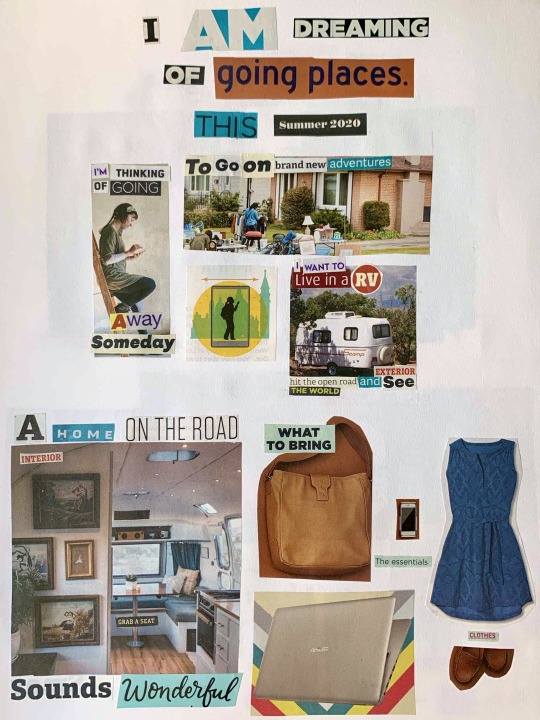

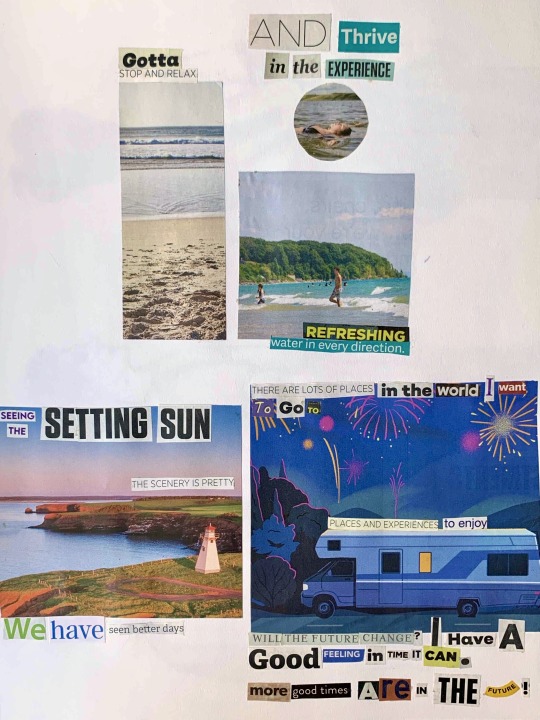
I am dreaming of going places this summer 2019.
I’m thinking of going away someday,
to go on brand new adventures.
I want to live in a RV,
hit the open road and see the world.
A home on the road sounds wonderful.
What to bring
essentials,
clothes,
I want to travel to Montréal,
72 hours in Montréal,
for the art, history and the beauty all around.
I will be very happy.
Gotta stop and relax,
and thrive in the experience.
Refreshing water in every direction.
Seeing the setting sun,
the scenery is pretty.
We have seen better days.
there are lots of places in the world I want to go to.
Will the future change? I have a good feeling in time it can.
More good times are in the future!
– A
#writing#writing:2020#course:visualstudies#writing:poetry#project:montagepoem#montage#poem#poetry#free verse
5 notes
·
View notes
Text
Short Stories
Story 1: Daydream, Vol. 7
Fiona joined her boyfriend Michael in the living room at around 11:45 p.m. She’d finally finished and submitted her final paper for her gothic literature class online, just barely meeting the deadline. She was exhausted by then, wanting nothing more but to cuddle with Michael and play on the switch to de-stress.
Her and Michael played ten rounds of Mario Kart on their switch (should have been five but Michael threw a tantrum after losing three games in a row). Still, Fiona came out as the definitive winner having won six rounds against Michael.
While Michael washed the dishes she went ahead and got ready for bed. She downloaded the Mario Kart game on her phone while doing her skin care and got herself started in between steps. The game didn’t seem too bad so far but she could see where Michael’s complaints about the dodgy controls were coming from. She wondered if there was any way to fix the steering and drifting in the settings to give her more control. Luckily there was and she quickly did that.
“This map is so hard,” Fiona mutters. She’s been lying in bed, sitting upright against the pillows having played a few maps now. Michael eventually enters the room appearing tired but relatively content. She’s stuck on a map and was tilting her phone and trying to drift to pull ahead of her opponents.
Michael, understandingly, looked confused.
“That doesn’t actually help, you know,” Michael says pointedly. He begins to get ready for bed while watching Fiona flail around. It amuses him to the point of laughing while planting half of himself on her to see what place she’s in.
“I changed the settings so you steer by tilting your phone and you tap to drift. It’s loads easier for me now,” she tells him as she tilts her phone on a hard left turn. She accidentally elbows Michael’s cheek in the process. “Oh- shit– sorry,” she apologizes over each abrupt motion she makes.
Michael chuckles and pays no more mind to her jerking motions and continues to lay his head in her lap to watch her play. The tower fan is on, pointed directly on Fiona the way she likes it, and truthfully feels quite nice on his face. He never liked the white noise of the fan running in his sleep and his exposed feet tended to get the butt-end of their deal, but he let her have this one thing figuring it’s gotten her to stay around for this long.

Story 2: Walking Contradictions
Harry thinks he knows his wife Bambi well, after being together for nearly a decade. So, when she came into their living room one summer morning, her eyes suspiciously aglow for someone who had to go to the pharmacy to pick up his antidepressants, Harry knew that she was up to something. He could see the cog wheels in her mind turning as he met her eyes from across the room, and his questions were answered upon spotting the small skeleton doll she was holding. It appeared to be made mostly of tiny (he hopes are fake) bones and a barbie-size head. Only the head is missing a face, and had a head full of matted black hair. ..
“That’s creepy,” Harry makes a pinched expression as he looks at it up close, “isn’t it a bit too early for shops to be selling Halloween decorations?”
“It’s never too early for Halloween,” Bambi disagrees as she takes the doll from him, taking it to the fireplace to place it on the mantle.
-:-
The house begins to look like a haunted house well before October 31st.
Harry didn’t really bat an eye when Bambi continued bringing home small Halloween related pieces like ceramic jack-o-lantern models and a practical witch’s spell book, but he felt he needed to step in once he saw her carrying a familiar bust into their living room.
“You are not putting that in here,” Harry immediately takes the bust from her, maneuvering it away from her grabby hands as they reach for it.
The bust was from a shoot he did for his first year, special effects makeup class in university. He had to create a prosthetic of his face; a mask, essentially. It turned out a little wonky since Harry didn’t have the experience he has now, and he might have been high while working on it. He would have thrown it away if Bambi hadn’t wanted to have it, and now he’s strongly reconsidering his decision to keep it.
“Come on, you know how much I adore that thing. It’s art!” Bambi huffs as she tries for the bust with Harry’s face again, but he only holds it above his head where he knows she won’t be able to reach it. “Hey, careful with him!” She gasps, making the jump to grab the bust from Harry which she quickly runs and places on the coffee table.
“But, it clashes with my Michaelmas Daisies,” Harry huffs motioning to how the fleshy bust dampened the soft nature of his purple flowers.
-:-
On Halloween morning, Harry wakes up alone with his face pressed into Bambi’s pillow having rolled onto his right side at some point overnight. He can tell because he can smell her Cloud perfume on the pillow covers.
Harry wanders through the hallway, his socked feet sliding over the recently installed floor boards just for the sake of it, while he takes in the lingering scent of their new walls as well. He mindlessly admires his handiwork. He’s wrapped up in his lavender dressing gown as he makes his way downstairs where the temperature drops, and he wonders if the thermostat is being faulty again.
What he finds in the hallway leading towards the rest of the house is worse than a faulty air con. Among the corny Halloween decor, is the words ‘YOUR NEXT’ painted on the walls in thick fake blood (he hopes).
“Babe?” Harry calls for his wife as he blinks at the mess on the wall.
“Yeah! I’m in the living room!”
“Come here a minute!” Harry says as he stares at the wall.
The pitter patter of her feet follows his request and soon Bambi meets Harry in the hallway, her hands still covered in the fake blood she’d smeared on their newly painted walls. She’s still carrying a plastic Tupperware container of the fake blood with her.
“Morning baby,” She greets him nonchalantly as she looks at him for his reaction to her work on the walls. “What do you think?”
“You used the wrong ‘you’re’,” Harry sighs as he takes the Tupperware container from her and dips three of his fingers in it. He begins to fix her mistake, adding the apostrophe between the ‘U’ and ‘R’ and an ‘E’ at the end.
“Sorry, I didn’t realize. I was honestly half asleep when I started in the hall,” She admits with a giggle as she takes the Tupperware container back from Harry. “Come see the living room.”
Harry laughs quietly, smiling softly to himself as he follows her, completely endeared by the sight of his wife enjoying herself, even if she was dripping fake blood all over their floors. You wouldn’t have guessed that he didn’t find Halloween very fun, though he’ll admit that over the years he grew to appreciate the spooky season more and more for the way it never failed to make Bambi’s eyes light up with pure happiness. The essence of the spooky season never really leaves, so long as Bambi has anything to do with it. Harry doesn’t mind, after all, Halloween is just another Thursday night for the pair nowadays.
1 note
·
View note
Photo

An Introduction By Abigail T.
This is an extreme-close up photo I took of myself in the mirror one summer afternoon a year ago for Instagram. I was practicing my usual self-care routine of doing a clay mask while listening to my meditation playlist, a collection of songs that puts me in a good, relaxed mood whenever I feel stressed and need grounding. I like how it turned out because it looks like a painting done with pointillist technique, like a muted, Van Gogh-Esque self-portrait. Yet, the colour palette is very cold; a blend of dark washes of charcoal grey and sand with cool undertones.
I chose this image to represent me because I’m the classic introvert in a room with creative dispositions who enjoys her hobbies and the aura of mystery she’s cultivated for herself but simultaneously lives in the apprehension of being judged, negatively evaluated, and rejected.
Being a somewhat reserved person my attention to detail goes beyond just taking a simple blurry mirror selfie. Instead, turning that concept into a literal reflection of how I present myself in social situations: seemingly close but in reality far away. Indiscernible against the gradient of a moving world even though I’m still, often masking how I feel, sometimes lost in my head, but also entirely aware of everything around me. I could just be placing too much thought on this one photo of me, but that’s exactly how my mind works; cogwheels always turning and eager to embrace every spark of inspiration that enters it.
For that reason, I love to create. I enjoy writing, painting, photo manipulation, and video editing. If there’s one thing these hobbies have in common is that I love telling stories, whether it’s through words or images. I took the photojournalism course as part of the degree requirements for a BA in English and it was one of the only courses I took that’s closest to fine arts. My limited opportunities to explore my other creative passions to show my creativity in other mediums inevitably led me to return to school for the Digital Art Production program. This is one of the required courses for the program, but I look forward to challenging myself with the lessons and assignments and hopefully gain new experiences that’ll go towards my evolution as an artist.
1 note
·
View note
Text
Women’s Fashion Over Time
In its vast timeline, the history of fashion in art reveals a complex socio-economic system influenced by a culture of valuing individual collectives in a world of dynamic change. It is a unique system in that which its influences are found in close quarters; a grapevine of cultural impact showing people influencing people. The ensembles worn by subjects in various paintings and sculptures present us with a glimpse into the socio-economic conditions under which fashion became a commodification of social status and a symbol of societal and cultural value. As cultural events and new political climates rise, causing shifts in values and general rules of fashionable appearance tastes in fashion appears to change. Yet the relatively stable constant in notions towards fashion is a prescribed label of class, and therefore, your worth and position in society, associated with the clothing you wore. In a series of six costumes inspired by the Early Renaissance, the High Renaissance, the High Renaissance in Europe, Baroque art, Rococo to Neoclassicism, and Romanticism, I will break down the fashion trends of each period, focusing on iconic features of each fashion period and briefly explaining the cultural context of each garment.
The Early Renaissance


This costume is based on the ensemble worn by Giovanni Arnolfini’s wife in the painting Giovanni Arnolfini and His Wife by early Renaissance painter Jan Van Eyck. A popular staple piece in early Renaissance fashion was the houppelande which was carried over from the fashion of the middle ages. In The Concise History of Costume and Fashion by James Laver, he describes the general appearance of the houppelande as a garment that fitted the shoulders and was loose below, with a belt at the waist; the houppelande is what will later be known as ‘gown’.[2] This replication of a typical houppelande has a high collar and extremely long sleeves, fur trimming and fur lining, and hanging tippets from the edge of the sleeve to the back of the gown. The gown itself is extremely long, ballooning outward from the waist. The houppelande could be made in a selection of fabrics such as wool, silk, and velvet[3], and were could be dyed a rich, vibrant colour as seen in Jan Van Eyck’s painting. Since the middle ages, the use of fur in fashion had become symbolic of wealth and importance and was oft worn by nobility.[4] Since fur was difficult to come by, it was an elitist luxury used in excess by middle and higher class people, establishing a social distinction between them and the lower-class through their clothing. As for the headdress, at this point, not much has changed since the middle ages in terms of style. However, the custom of covering mature and married women’s hair was becoming less strict, and we see more women revealing their hairstyle beneath their headdress.[5]
The High Renaissance


This High renaissance costume is based on the Mona Lisa by Leonardo da Vinci. The During the High renaissance, many cultural trends such as the rise and spread of books, the expansion of trade and exploration, and the increase in power and wealth of national monarchies in France, England, and Spain influenced tastes in fashion and the dynamic changes fashion underwent, as well as the idea of the modern ‘trendsetter’.[6] The essential garment for the High Renaissance woman was the gown. Its general features were the bodice, a skirt, and sleeves. The complex ensemble of the gown during this period can be seen in da Vinci’s Mona Lisa. The gown could be made from luxurious materials such as silk, velvet, and lace, worn with lavish jewelry, and decorated with intricate patterns of stitching and embroidery.[7] While the gown silhouette was common across social classes, the distinction lies within the materials used. Although the wealthy and powerful used expensive textiles for their gowns, the lower-class was still capable of emulating the gown with the materials they had access to such as wool and cotton.
The High Renaissance in Northern Europe
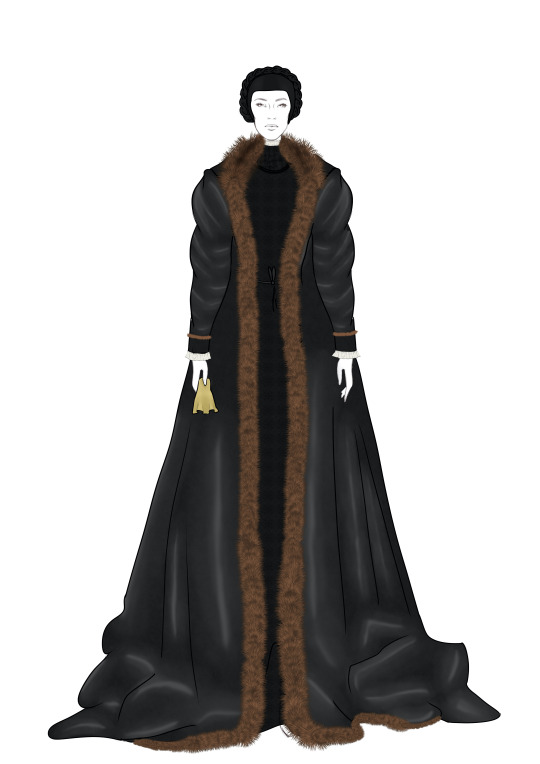

My iteration of Northern European High Renaissance fashion is based on Hans Holbein the Younger’s Portrait of Christina of Denmark. This portrait demonstrates the conservative side of fashion that was flourishing alongside a bold, vibrant movement that was challenging established trends. The model adorns a dark, velvet gown with a high collar; underneath we see a glimpse of the ruffs from her high collared undershirt. The ruffs were a common feature of the late fifteenth and sixteenth centuries, typically characterized as an upright, stiff collar that ruffles around the neck; ruffs were commonly adorned by noblemen and noblewomen.[8] Now, Holbein’s Portrait of Christina of Denmark does not show the typical extravagant ruffled collar, which could have been a stylistic choice by Holbein to allow the fur lining and trim of the subject’s outer gown to stand out, and remain the statement feature representing her wealth in the painting. The large size of the outer gown appears to further imply how much fur the gown is made of.
Baroque Art


The Baroque artwork I’ve based this costume design on is Vermeer’s, Girl with a Pearl Earring. The Baroque period introduced innovations to the popular sixteenth-century gown. At the time Vermeer’s Girl with a Pearl Earring was composed, seventeenth-century fashion had already gone through several evolutions. Stomachers, which was either a v-shape or u-shape panel meant for decoration and structure, had become stiffer and flatter and elongated past the line of the waist.[9] Replacing the trend of using wired hoops, or farthingales, to give body to the skirt was the petticoat. The petticoat was a practical solution to the everyday issues of functionality women faced with farthingales. Petticoats made of cotton or wool were perfect for warmth, while more fashionable petticoats were made of taffeta, satin, linen, or a combination of starched fabrics.[10]
Rococo and Neoclassicism
This costume was inspired by Vigee Le Brun and her artistic style which can be described as being a mix of rococo colours with elements of the Neoclassic style. As a prolific French portrait painter, one of her prominent subjects for portraits was Marie Antoinette, the Queen of France who despite her tumultuous life in the public eye, was a fashion icon. The genius in Le Brun’s craft lies in her vast knowledge of current fashion and her awareness of the power of appearance.


I based this costume on Vigee Le Brun’s, Self Portrait in a Straw Hat. In the painting, Le Brun is wearing a variation of the robe en chemise which emerged during the late eighteenth-century period as tastes in fashion moved away from the early period’s penchant for fuller-bodied skirts.[11] While its design echoes elements of early Rococo style, the robe en chemise was a gown made simple. These dresses were usually made of sheer, white cotton, with high waists and wrapped with a decorative satin sash; its slender silhouette was inspired by the fashion of ancient Greece and ancient Rome.[12] These dresses could also come in various colours, such as the rose-gold coloured dress Le Brun is wearing in her self-portrait. With its sheer material and low-cut neckline, the robe en chemise gained widespread attention because of its revealing nature; until this point, the gowns we’ve seen have been voluminous and covered much of the female body. Yet, this scandalous fashion found its way into the wardrobe of royalty, and most likely, the wardrobe of some upper-class women who wanted to be revered for wearing the latest fashion. This portrait of Marie Antoinette wearing a robe en chemise was painted by Le Brun.
Romanticism
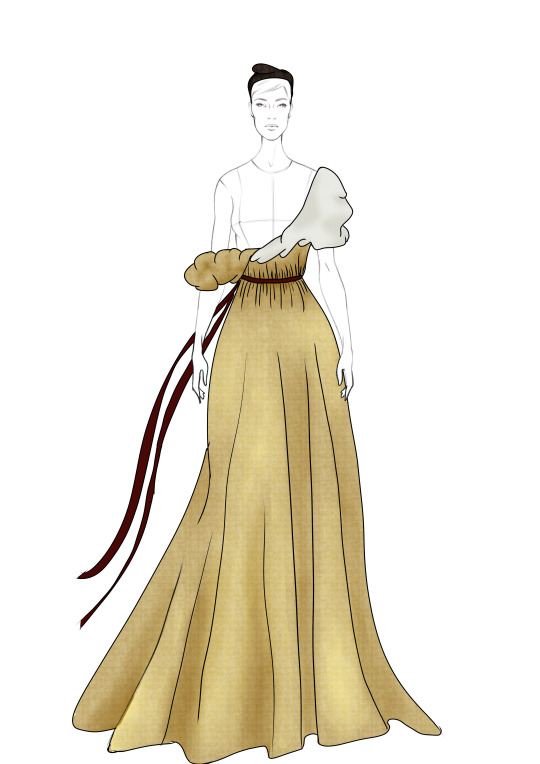

Based on Delacroix’s, Liberty Leading the People, this costume is an iteration of the symbolic fashion of the woman in his painting. She is Liberty; she represents freedom, in an image that evokes a triumphant revolution as she leads people on the battlefield. The Romantic movement differed vastly from the current situation in early nineteenth-century France, which was characterized by social unrest and civil war between the bourgeoisie and the working class.[13] Romanticism was mostly a reaction to the modern realities brought on by the industrial revolution; the romantic movement in art reveals a desire to escape these modern realities, a theme which Delacroix’s painting emulates perfectly.
Liberty Leading the People encapsulates the transitional period between Neoclassicism and Romantic sensibilities.[14] There are neoclassical elements in Liberty’s appearance, but most prominent is her dress. The painting feels reminiscent of the time of unrest during the French Revolution, which Liberty embodies in her wearing a robe en chemise, referred to simply at this point as ‘a dress’. In general, dresses of any kind were lighter and much sheerer than garments from the eighteenth-century but the general features of the dress were kept the same: made from any selection of fabrics and usually white or light in colour, short sleeves, high waists and long, straight skirts.[15]
From this brief overview of women’s fashion over time, it is evident that notions towards dress and appearance, and how we tend to associate certain styles of fashion to specific groups of people and/or cultures have not changed. Although fashion continues to evolve, the same old fashion trends appear and disappear, then reappear; reinvented or inspiring a consequent fashion movement. There is a romantic sensibility in the way we often tend to return to past fashion trends. It begs the question if there will ever be a completely fresh fashion movement, or will our futile attempts remain the shells of historic innovations in fashion from the past. Nevertheless, as one of few primary resources for contemporary fashion designers, these artworks reveal the true impact of fashion and art as they continue to influence fashion and social cultures in our modern world.
––––––––––––
Footnotes
[1] Ibid. 600.
[2] Laver, "The Concise History of Costume and Fashion: Laver, James, 1899-1975: Free Download, Borrow, and Streaming." Internet Archive. January 01, 1969. Accessed July 17, 2020. https://archive.org/details/concisehistoryof00lave/mode/2up, 64.
[3] Pendergast, Sara, Tom Pendergast, and Sarah Hermsen. Fashion, Costume and Culture: Clothing, Headwear, Body Decorations, and Footwear through the Ages. Vol. 3. Detroit: U.X.L, 2004, 450.
[4] Ibid. 624.
[5] Ibid. 488.
[6] Ibid. 469.
[7] Ibid. 477.
[8] Ibid. 482-483.
[9] Ibid. 521; 525.
[10] Ibid. 523.
[11] Ibid. 570.
[12] Ibid. 570
[13] Hurley, Clare. "French Romantic Painter Eugène Delacroix at the Metropolitan Museum in New York." French Romantic Painter Eugène Delacroix at the Metropolitan Museum in New York. December 20, 2018. Accessed July 22, 2020. https://www.wsws.org/en/articles/2018/12/20/dela-d20.html.
[14] Ibid.
[15] Pendergast, Sara, Tom Pendergast, and Sarah Hermsen. Fashion, Costume and Culture: Clothing, Headwear, Body Decorations, and Footwear through the Ages. Vol. 3. Detroit: U.X.L, 2004, 622.
–––––––––––
Bibliography
Hurley, Clare. "French Romantic Painter Eugène Delacroix at the Metropolitan Museum in New York." French Romantic Painter Eugène Delacroix at the Metropolitan Museum in New York. December 20, 2018. Accessed July 22, 2020. https://www.wsws.org/en/articles/2018/12/20/dela-d20.html.
Laver, James. "The Concise History of Costume and Fashion: Laver, James, 1899-1975: Free Download, Borrow, and Streaming." Internet Archive. January 01, 1969. Accessed July 22, 2020. https://archive.org/details/concisehistoryof00lave/mode/2up.
Pendergast, Sara, Tom Pendergast, and Sarah Hermsen. Fashion, Costume and Culture: Clothing, Headwear, Body Decorations, and Footwear through the Ages. Vol. 3. Detroit: U.X.L, 2004.
0 notes
Text
A Deep Dive into the Political Affiliations of the Roman Catholic Church During the Gothic Period
The Gothic Age of Architecture: An Elevation of European Style and Influence
If we are meant to comprehend art as a mode of expression, whether it be a thought or opinion, it is nevertheless a way to send a message. Architecture, much like the typical idea of art that comes to mind, can be an expression of a message which itself can relate to an abstract or certain identity. For instance, the transformation between Early Medieval and Romanesque architecture, and Gothic and Late Medieval architecture in Europe is defined by a transitional period of profound change and experimentation happening across various cultural sectors in Northern Europe. As vessels of historical knowledge providing insight into systemic practices and advancements in constructing, we can look at the emergence of Gothic and Late Medieval architecture in France as a tangible model of the cultural shifts in European politics and society that altered the everyday life of its citizens when the Gothic era began. While we know historically that progress was certainly on its way, there was a rather apprehensive grasp on a traditional system of power which gothic architecture appears to conform to, figuratively speaking, if we look at the concept of replication of the gothic elements introduced in the Basilica Cathedral of Saint-Denis, a formidable example of religion and politics, two institutions of great power, converging.
The Gothic Period
�� The Gothic period arrives in three waves: Early Gothic, High Gothic, and Late Gothic, with the next wave building upon the foundations of its predecessor as architectural styles, evolved to accommodate the changing times. Looking at several Cathedrals from each Gothic period, it is easy to understand the influence of gothic architectural elements as they present themselves. Beyond representing a newfound aesthetic-driven appreciation for the soon-to-be Gothic style and how it provided accommodations for a physically growing society, the way the Basilica Cathedral of Saint-Denis became a figurehead for gothic architecture and inspired the plans for Gothic cathedrals that followed, lead me to want to look at the connections between politics and religion, and how this relationship, modelled by gothic architecture such as the Basilica of Saint-Denis, was helping to push the Catholic agenda forward.
Early Gothic Architecture

Fig 1. Ninara, The Basilica Cathedral of Saint-Denis, January 11, 2016, Flickr https://www.flickr.com/photos/ninara/24619543142/

Fig 2. Kathedrale Saint-Ètienne, Sens By © Raimond Spekking / CC BY-SA 4.0 (via Wikimedia Commons), CC BY-SA 4.0, https://commons.wikimedia.org/w/index.php?curid=65582950
Basilica Cathedral of Saint-Denis: A New Standard of Beauty
Contrary to its perceived connotation of everything dark and sublime, the Gothic architectural style in Medieval Europe appears to embrace the freedom of large spaces, though this was not an entirely new concept. The Basilica Cathedral of Saint-Denis was originally constructed during the Romanesque era thus retained much of its exterior Romanesque architecture even after Abbot Suger’s remodelling project.[1] An era of increasing prosperity and peace seemingly provided a convenient reason for architectural styles to evolve as a period of relative stability allowed for prevailing issues to be addressed such as spurts in population growth. As population numbers increased, the need for larger places of worship for citizens to congregate became apparent. In response to this need for more space, Abbot Suger redesigned the composition of various sections of the Cathedral, keeping in mind that to accommodate more people he would need to somehow create more space. His major contribution was introducing the pointed arch in his design, which became a notable characteristic of gothic architecture. The pointed arch, likely borrowed from Islamic architecture and likely seen in Spain during this time, relieved some of the thrust, subsequently relieving the stress on other structural elements, and made it possible to reduce the size of columns that supported the arch– which was slenderer compared to Romanesque pillars[2]. Suger’s design also introduced improved ribbed vaulting which was where the pointed arch, when seen in three dimensions was where the ribbed vaulting met in the centre of the ceiling of each bay[3]. We can see this design at work in the ambulatory and chapel of the Saint-Denis Cathedral (fig 3, 4).
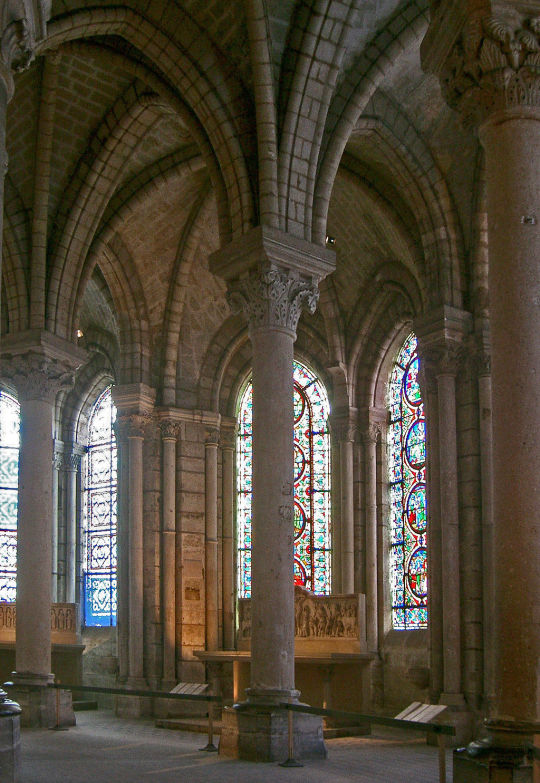
Fig 3. Beckstet, The Ambulatory, Basilica Cathedral of Saint-Denis, Saint-Denis, France, April 2005, Wikimedia Commons accessed June 20, 2020, https://commons.wikimedia.org/wiki/File:Basilica_Saint_Denis_ambulatory.JPG
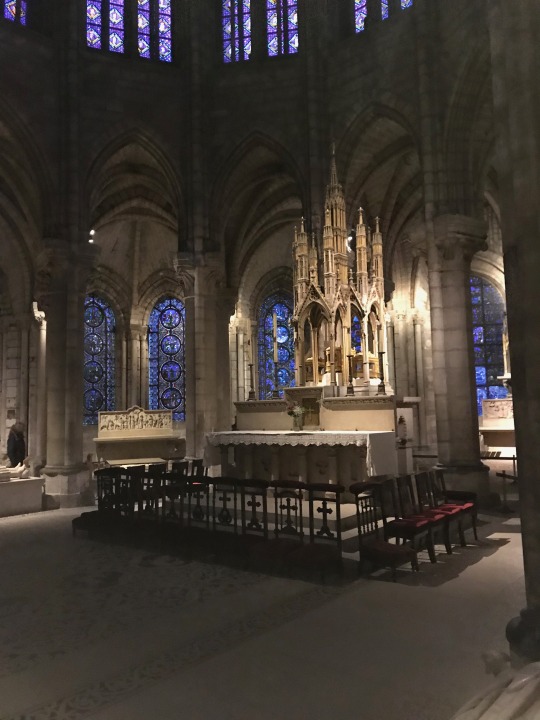
Fig 4. Chabe01, Autel des Corps saints, Basilique Saint-Denis, Saint-Denis, Seine-Saint-Denis, December 2, 2017, Wikimedia Commons accessed June 20, 2020, https://commons.wikimedia.org/wiki/File:Autel_Corps_saints_Basilique_St_Denis_St_Denis_Seine_St_Denis_5.jpg
The impact of the remodelling of Saint-Denis is felt in the Saint-Ètienne Cathedral, also located in France which was the first cathedral built entirely in the gothic style[4] (fig 2). This is an acute example of how influential gothic architecture became as it inevitably spread throughout Europe.
While relatively harmonious times allowed Early Gothic architecture to flourish, progress and change continued to run the underbelly of European culture.
High Gothic

Fig 5. Garitan. View from north-east of Reims Cathedral (High Gothic), June 7, 2015, Wikimedia Commons accessed June 20, 2020, https://commons.wikimedia.org/wiki/File:ReimsCathedral0116.jpg
The stylistic evolutions of Gothic cathedrals are one way of looking at how the general composition and stylistic approaches of Gothic Cathedrals mirror the cultural shifts within European society. The exterior build of the Reims Cathedral reveals a much more ornate and decorative High Gothic style compared to the Early Gothic style (fig 5), yet the interior retains the early gothic style of pointed arches and ribbed faults as seen in the nave (fig 6).
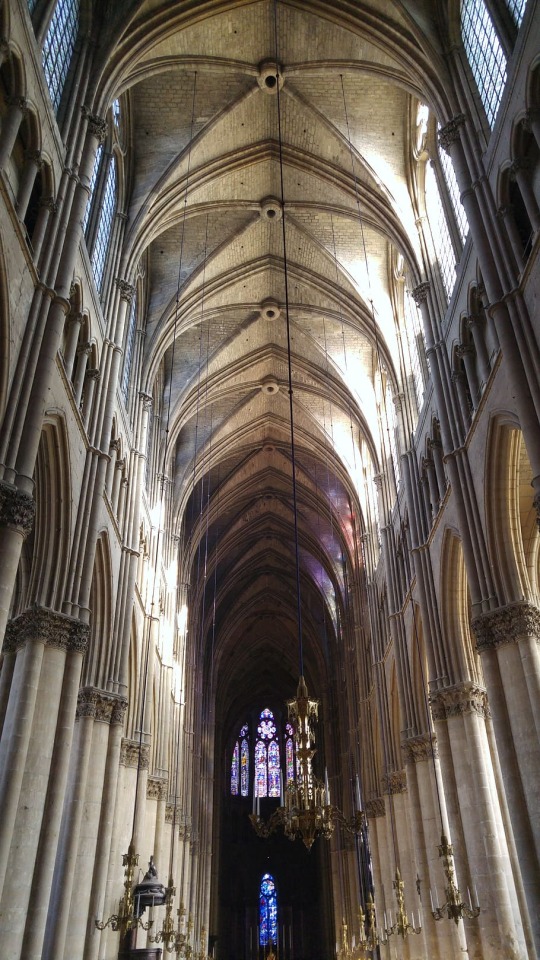
Fig 6. Interior of the Reims Cathedral, Reims, France. https://www.pxfuel.com/en/free-photo-qmtdr
Late Gothic

Fig 7. Flamboyant Gothic east end, Prague Cathedral (1344–), By Dietmar Rabich, CC BY-SA 4.0, https://commons.wikimedia.org/w/index.php?curid=80006695
Late Gothic architecture accurately regards its style as ‘flamboyant’. Much of the architecture during this time reflects the geometric achievements engineers and designers accomplished over time. Revelling at the intricate tracings of the exterior of the Prague Cathedral one can appreciate the technical mastery embossed in these buildings.
Although architectural achievement seems to favour the bold I want to look more into the confounding political nature of cathedrals during the gothic period. The presence of royal and noble authority figures within the roots of gothic architecture is exemplified by the construction and eventual remodelling of the Basilica Cathedral in Saint-Denis.
Where Politics and Religion Converge
The consensus between architectural historians attests to the origins of Gothic architecture to be found in the Basilica Cathedral of Saint-Denis in Saint-Denis, France.[5] Historically, Gothic art is exclusively religious, reflecting the growing power of the church in Rome[6]. As the final resting place for Monarchs, the cathedral of Saint-Denis is one such example where politics and religion converge; a symbol of the substantial influence of two prominent institutions.
The Abbot Suger, who pioneered the ascension of Gothic architecture with his remodelling of the Basilica Cathedral of Saint-Denis (Fig 1), was also a statesman. As an advisor to Kings Louis VI and VII[7], the construction of the Basilica Cathedral of Saint-Denis was under Abbot Suger’s supervision. However, it is not hard to imagine, how this collaboration justified the strength of the union of the church and the state at the time, and what message Abbot Suger’s architectural style helped spread.
Various members of the church, such as the abbot, archbishop, friar, and clergy were interested in secular life and began valuing material wealth and a desire for power.[8] Synonymous with the renewed vitality of Christianity, members of the church amassed a sense of pride as they became powerful figures in European society. This collective pride lead to the promotion of building larger churches, not only as a place of worship but a robust symbol of their newfound pride.[9] Abbot Suger’s Gothic style allowed for a revitalized sense of grandeur from the way his addition of pointed arches, slender pillars and ribbed vaults allowed the interior of the cathedral to appear and feel more expansive and filled with light. One area in the Basilica of Saint-Denis where this heavenly space can be felt is in the new choir (fig 8). Symbolically, this grandiose awareness of space and light represents the presence of divine power, which the church adopts to project their feeling of empowerment during this changing time.

Fig 8. MOSSOT. Choeur, Basilique de Saint Denis, Saint-Denis, France, https://commons.wikimedia.org/wiki/File:Saint-Denis_-_Basilique_-2.JPG
The success of the Basilica Cathedral of Saint-Denis is fundamentally carried by the opportune rise of power of the Roman Catholic church. This rise was due in part to what seems to be the commodification of salvation[10], ergo, indicating a sort of industry built on the faith of people; specifically, their beliefs relating to the soul. With a monopoly on existing religions, Christianity and the medieval church helmed had a wide outreach, supplying a monopoly input referred to as “the conditions of salvation” which was carried by the Pope’s position as the exclusive authority for the Holy scripture.[11] As people of strong faith would turn to the Basilica of Saint-Denis in times of need and spiritual consolidation, one of the images people would see when entering through the north portal is the sculptural interpretation of Saint-Denis’ beheading (fig 9).
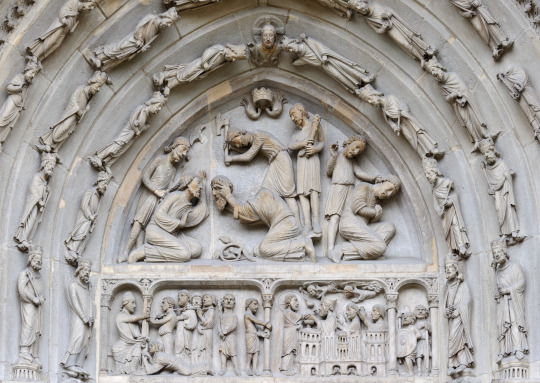
Fig 9. Myrabella, Basilica of St Denis, France, tympanum of the portal of the north transept: the beheading of Saint-Denis and his companions Rustique and Eleutherius, March 1, 2012, Wikimedia commons accessed June 23, 2020, https://commons.wikimedia.org/wiki/File:Basilique_Saint-Denis_portail_nord_tympan.jpg
As it appears, gothic architecture often represents much more than aesthetically satisfying, architectural iconicity and demonstrations of virtuosic technical skill. Christianity maintains its robust presence in Europe during the medieval ages, arguably through their affiliation with the royal family and other members of the nobility. As Christianity underwent a process of vitalization it fundamentally altered the stature of Northern Europe, creating centres of culture out of France, and eventually England, Holland, Germany and Austria.[12] Clergymen maintained political authority, and were in frequent communication with monarchies and other influential bodies of power which placed cathedrals in an interesting position; not just as a symbol of faith, but as well as a symbol of overwhelming power and influence of the state.
––––––––––––
Footnotes
[1] "Basilica of St. Denis: Architecture & History." Study.com. July 14, 2017. https://study.com/academy/lesson/basilica-of-st-denis-architecture-history.html.
[2] Spanswick, Valerie. “Gothic Architecture: an Introduction (Article),” Khan Academy (Khan Academy), accessed June 23, 2020, https://www.khanacademy.org/humanities/medieval-world/gothic-art/beginners-guide-gothic-art/a/gothic-architecture-an-introduction.
[3] ibid
[4] “Gothic Art (C.1150-1375),” Gothic Art: History, Characteristics. (Encyclopedia of Art History), accessed June 23, 2020, http://www.visual-arts-cork.com/history-of-art/gothic.htm.
[5] Fred S. Kleiner and Helen Gardner, “Gothic and Late Medieval Europe,” in Gardner's Art Through The Ages: A Concise Western History, Fourth (Australia: Cengage Learning, 2017), pp. 189.
[6] “Gothic Art (C.1150-1375),” (n 4)
[7] Anne F. Rockwell, “Suger,” Encyclopædia Britannica (Encyclopædia Britannica, inc., April 30, 2020), https://www.britannica.com/biography/Suger.
[8] Wang, Z. (2010). The Reconciliation of Reason and Faith in the Gothic Period of Medieval Europe. Journal of Cambridge Studies, 5 (4), pp. 94. https://doi.org/10.17863/CAM.1373
[9] ibid 94.
[10] Ekelund, Robert B., Robert F. Hébert, and Robert D. Tollison. "An Economic Model of the Medieval Church: Usury as a Form of Rent Seeking." Journal of Law, Economics, & Organization 5, no. 2 (1989): 309. Accessed June 23, 2020. www.jstor.org/stable/765028.
[11] Ibid 311
[12] Robert Chazan, “Medieval Northern Europe,” Refugees or Migrants, 2018, pp. 158-184, https://doi.org/10.2307/j.ctv8jp09p.11.
–––––––––––
Bibliography
"Basilica of St. Denis: Architecture & History." Study.com. July 14, 2017. https://study.com/academy/lesson/basilica-of-st-denis-architecture-history.html.
CHAZAN, ROBERT. "Medieval Northern Europe." In Refugees or Migrants: Pre-Modern Jewish Population Movement, 158-84. NEW HAVEN; LONDON: Yale University Press, 2018. Accessed June 23, 2020. www.jstor.org/stable/j.ctv8jp09p.11.
Ekelund, Robert B., Robert F. Hébert, and Robert D. Tollison. "An Economic Model of the Medieval Church: Usury as a Form of Rent-Seeking." Journal of Law, Economics, & Organization 5, no. 2 (1989): 307-31. Accessed June 23, 2020. www.jstor.org/stable/765028.
“Gothic Art (C.1150-1375).” Gothic Art: History, Characteristics. Encyclopedia of Art History. Accessed June 23, 2020. http://www.visual-arts-cork.com/history-of-art/gothic.htm.
Kleiner, Fred S., and Helen Gardner. “Gothic and Late Medieval Europe.” Essay. In Gardner's Art Through The Ages: A Concise Western History, 4thed., 186–215. Australia: Cengage Learning, 2017.
Rockwell, Anne F. “Suger.” Encyclopædia Britannica. Encyclopædia Britannica, inc., April 30, 2020. https://www.britannica.com/biography/Suger.
Spanswick, Valerie. “Gothic Architecture: an Introduction (Article).” Khan Academy. Khan Academy. Accessed June 23, 2020. https://www.khanacademy.org/humanities/medieval-world/gothic-art/beginners-guide-gothic-art/a/gothic-architecture-an-introduction.
Wang, Z. (2010). The Reconciliation of Reason and Faith in the Gothic Period of Medieval Europe. Journal of Cambridge Studies, 5 (4), pp. 93-109. https://doi.org/10.17863/CAM.1373
0 notes
Photo
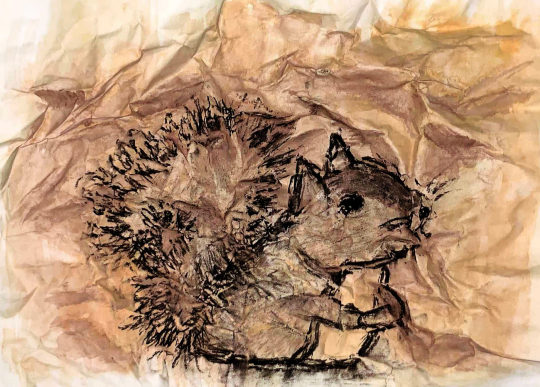
A Sly Squirrel – Inspired by the Chauvet Cave Paintings
The subject of my cave painting is an adult squirrel that often visits my window, chewing apart the thin screen that separates him and the glass and the frame which holds it in place. I attempted to draw him in the moments when I hear his little teeth gnawing at my window screen and the blank expression he has when he makes eye contact with me.
Using different grades of charcoal, I attempted to draw the squirrel over bumpy, raised ridges of my ‘cave wall’ to give the impression of a three-dimensional animal, as per the ancient technique. I emphasized intensity on the hairs of its bushy tail because it stands out to me the most every time I see it. I also emphasized a strip of dark hair on the crown of its head because it’s how I identify it as the same squirrel every time it appears on my window sill.
0 notes
Photo
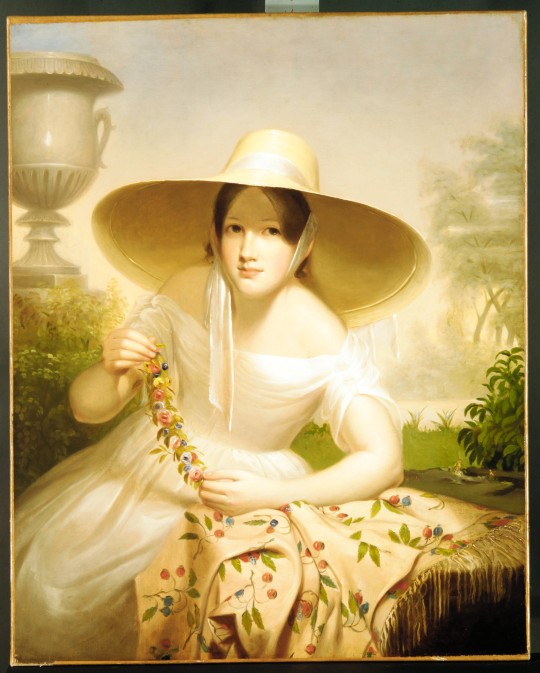
Thompson, Cephas Giovanni. Spring. 1838. Oil on canvas, 36 x 28 3/4 in. Source: https://www.metmuseum.org/art/collection/search/12799
Introduction – Spring
Hello, my name is Abigail Tamayo. I graduated from Ryerson a year ago this June with a BA in English, and fuelled by the situation the world is currently in, I placed my year-long dormancy of being in the safe, yet impractical reverie of sleeping my anxieties away on hold to truly think about what I wanted to do. As I reflected on my journey thus far behind the enforced comfort of my chipped desk, I found myself periodically gazing out my window into my backyard, wondering if it smells like spring yet.
My musings eventually led to me deciding on this painting by Cephas Giovanni Thompson called Spring, to represent me.
For me, the springtime reminds me of the opening lines of The Waste Land by T.S. Eliot:
“April is the cruellest month, breeding
Lilacs out of the dead land, mixing
Memory and desire, stirring
Dull roots with spring rain.”
1-4
This is an arguably dark representation of the springtime but a reminder for me of a time when spring marked the end of a series of haphazard attempts to navigate through difficult months, poisoned by seasonal-depressions and stress. For this reason, my love for spring had a very different connotation compared to my feelings now. A year on I’ve fallen in love with the springtime again, viewing it with a cleaner lens, in brighter light, but much like a tragic play, I’m unable to fully immerse myself in nature as I’ve placed greater importance in practicing social distancing which involves limiting my time spent outdoors. Yet, even though I’m separated from nature, the feel of a soft breeze blowing softly through the trees and the soft, wet feel of grass, covered by morning dew, is still tangible through my bedroom window, much like the composition of this painting. The artist’s light-handed strokes and use of light colours, edging on pastel, golden yellows, cremes, beige, red, and greens in both the subject and the landscape behind her evoke a mystified snapshot of the springtime. The way the subject is poised so informally, donning a large-brimmed white hat within this natural setting reminds me of photos I’ve taken of myself whenever I spot a well-groomed bush of flowers that would look lovely on Instagram.
I have always found solace in art, treating time I’ve put aside to paint as a form of art therapy, but this will be my first art history course and I’m more than eager to be more educated in how I can better appreciate art while also learning more about the cultural and historical contexts of artwork. I also enjoy writing stories and poetry, music, books, movies, and video games; anything with a good story or visual presentation earns my interest immediately. When I’m not focused on school or engaged in some type of creative activity, I’m probably deep in a subspace of my mind, daydreaming about random scenarios that are like a film reel in my head.
Alongside this course, I am also taking Visual Studies I this spring/summer and I’m strangely looking forward to baring my soul in the art I create even if the idea makes me anxious. I look forward to growing and evolving as I learn about art history and creating art.
–––––
Bibliography
Eliot, T. S. “The Waste Land by T. S. Eliot.” Poetry Foundation. Poetry Foundation. Accessed May 4, 2020. https://www.poetryfoundation.org/poems/47311/the-waste-land.
2 notes
·
View notes